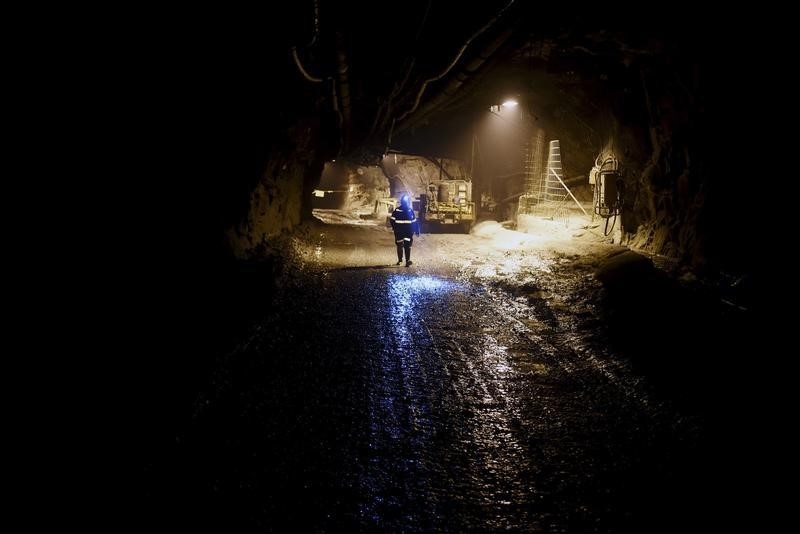(Repeats with no changes to text)
By Clyde Russell
LAUNCESTON, Australia, Sept 22 (Reuters) - One of the themes in Australia as the resource boom comes to an end is that the country will be able to compensate by boosting its agricultural sector, the so-called "mining to dining" manoeuvre.
An Internet search of the terms Australia and "mining to dining" reveals almost 4,000 items, many focused on the view that China, the top buyer of Australia's resources, will not only continue to suck up the country's iron ore and coal, but also all the farm goods it can produce.
This idea became all the more prevalent as the prices of iron ore and coal, Australia's major exports, started to plunge in 2011, shattering the unrealistic hopes of politicians and voters of an endless commodity boom that would deliver a tax revenue bonanza.
The gloom was reinforced by the downgrading of expectations of the next big hope, liquefied natural gas (LNG), where prices dropped by more than 70 percent in the past 2 1/2 years just as Australia was completing eight new export plants of the super-chilled fuel.
Enter agricultural produce and China's seemingly endless appetite for quality beef, dairy, wine and fish as Australia's new positive narrative.
However, while Australian agricultural exports have shown strong growth in recent years, they too appear to now be experiencing the limits of China's appetite.
The Australian Bureau of Agricultural and Resource Economics and Sciences (ABARES), a federal government forecaster, said it expects the value of the country's farm exports to drop by 5.6 percent to A$44 billion ($33.6 billion) in the 2016-17 fiscal year that started on July 1.
This is despite an expected 2.8 percent rise in the volume of farm output, with ABARES saying price declines for exports of wheat, dairy, barley and chickpeas will more than offset expected price increases for wool, wine, lamb, sugar, cotton and some other farm products.
The struggles of the dairy industry illustrate just how difficult it is to engineer a sustainable lift in production.
Dairy processors ramped up output in recent years on the back of rising Chinese imports of both fresh and powdered milk products, encouraging farmers to increase output and the amount of land devoted to dairy.
However, prices collapsed as China built up its own dairy industry and placed stricter controls on imported products.
Nonetheless, Australian farm exports have performed admirably in recent years, rising 6.8 percent from A$41.2 billion in the 2013-14 year to the estimate for the current 2016-17 period.
MINERALS AND ENERGY ON THE REBOUND?
But they still have some way to go to close in on iron ore, which remains top dog despite the 80 percent plunge in spot Asian prices .IO62-CNI=SI between February 2011 and the recent low point reached in December last year.
Iron ore exports are forecast to earn A$48.85 billion in 2016-17, according to the government's June Resource and Energy Quarterly publication.
This is down from the record A$74.6 billion in 2013-14, but the point to note is that there is an upside risk to the current forecast, given iron ore's .IO62-CNI=SI 29 percent rally so far this year.
However, Australia's farm exports are now more valuable than its shipments of coal.
The government forecasts combined metallurgical and thermal coal exports worth A$31.9 billion in 2016-17, down from A$40 billion in 2013-14.
This is a reflection of weaker coal prices, but, similar to iron ore, these appear to have bottomed and are on track to record the first year of gains in 2016 after five years of losses.
The value of LNG exports is also expected to surge in 2016-17 as the new plants ramp up output, with the government forecasting A$25.3 billion for the fiscal year, up 55 percent from the A$16.3 billion in the 2013-14 year.
The value of all Australia's resource and energy exports is expected to reach A$163.4 billion in 2016-17, up from the prior year's A$158.2 billion, but down from A$194.9 billion in 2013-14.
This means resource and energy exports are still nearly four times the value of farm exports.
The gap has narrowed in recent years, but mainly because resource and energy prices have fallen sharply while farm products have performed better.
The shoe now appears to be on the other foot, with rural products struggling and mineral and energy commodities showing signs of a sustainable recovery.
This will make it harder for Australia to continue to promote the idea of a "mining to dining" boom, as the reality is that no matter how well farm exports perform, they have a long way to go before they can come close to matching minerals and energy. (Editing by Himani Sarkar)
